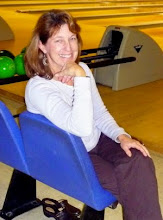Huge foam-core boards are dripping with post-it notes, inspiring images and architectural drawings of Querencia- my soon-to-be artist cottage.
It is big and messy and changing shape daily, but the vision remains pure. I will revisit it often as we get pulled into the busy execution of construction plans.
I think each creative project needs a compass, a true North.
This one started with the enticing question stapled at the top of the board-
What If?
Ahhh... I love that inquiry.
What if? is an invitation to dream big, to remember what matters most, to create something that works.
It does not believe in limits. It begs creative solutions. It grabs your hand and pulls you out of your comfort zone.
And it will not accept excuses!
When I first dreamed of a little artist cottage, I wondered what sort of building might provide the comfort and freedom and inspiration that creativity needs to blossom.
I imagined it would have lots of natural light and a "fluid" shape- not the typical right-angle boxes we are used to.
Inhabiting the building would be inspiring in and of itself.
I realized I was dreaming of a place that didn't feel built at all- more sculpted and alive.
"What if", I wondered, "you could create a little building that feels like it just sprouted from the earth". It occurred to me that that is exactly what any creative work feels like- a gift of nature, something blossoming naturally from the seed you've planted.
Then I read about the book, The Hand-Sculpted House, by Ianto Evans, Michael Smith and Linda Smiley-
"A Cob Cottage might be the ultimate expression of ecological design, a structure so attuned to its surroundings that the authors refer to it as "an ecstatic house". They build a house the way others create a natural garden, using the oldest, most available materials earth, clay, sand, straw, and water and blending them to redefine the future (and past) of building. Cob (the word comes from an Old English root, meaning "lump") is a mixture of non-toxic, recyclable, and often free materials. Building with cob requires no forms, no cement, and no machinery of any kind. Builders sculpt their structures by hand."
When I finished reading that book cover to cover, my perspective about shelter was changed forever. I'm hooked!
The first chapter- the "why"- is worth reading on its own... beautifully philosophical and clear-headed.
"Natural Building means paying attention to all the details of how the world really works"...and then building in harmony with Natural Laws. Amen to that!
There is no denying that in Nature:
-Nothing is ever created or destroyed: it merely changes form.
-Everything gradually falls apart.
-Everything is unique.
-There are no monocultures.
-Nature uses just as many resources as are necessary and no more.
So why do we insist on designing homes dictated by the straight 2" X 4" board or the 90-degree angle? Before the last nail of any new house is sunk, Nature has already begun warping the board and applying pressure at the weak corners- trying to restore it to its natural form: curved and stable.
Take a walk through the woods... there are no straight lines, there are no squares.
The rest of the book teaches how to cooperate with Nature in building structures that; age gracefully, capitalize on nature's strongest shapes and materials, and look like they belong in their setting.
When you stand inside a natural building it FEELS good. It is true! People visibly relax, even sigh, when they enter a home made of mud or straw... because their body is saying "I'm at home here. It feels familiar. My oldest memories are of earth and green and sunlight".
One of Ianto's examples really stuck with me.
He compares a picture of a bird sitting in her bird-designed nest to a bird in a man-made birdhouse.
The first bird has built a structure that conforms warmly and comfortably to the shape of its body, intelligently slopes upward to contain it's contents (eggs), and uses only the materials it needs for this purpose- no waste, less materials to gather. The square birdhouse has four empty corners- wasted space that draws heat and bedding away from the inhabitant. Wood, nails, glue and paint for the birdhouse required trips to the store and undoubtedly scraps were thrown in the trashcan.
I think this is a beautiful illustration of what natural building is all about.
We are animals. We like spaces that "fit" us. We are hard-wired to feel energized in clean, natural light. We feel safe leaning against backs that support and protect us while giving us a view "out" into the world (window seats, reading nooks near windows).
 The authors provide example after example of shelters designed to feed our instincts, not our ego.
The authors provide example after example of shelters designed to feed our instincts, not our ego.Tall ceilings, long halls, and massive foyers are designed to create a feeling of awe and powerlessness- they make sense in cathedrals and museums. But would you want to live in one?
What if we asked our bodies what kind of space makes us feel comfortable, safe, connected, creative...
What if we built it from the land it sits on...
What if we invited others to create it with us?
Stay tuned. I hope to do just that!
~~~~~~~~~~~~~~~~~~~~~~~~~~~~~~~~~~~~~~~~~~~~~~~~~~~~~~~~~~~~~~~~~~~~~~~~~~
Natural Building helps us connect again to our local natural environment, to our own intuitive and innate creativity, and to each other. It helps us to shift from an industrial, and often toxic building process to one that is affordable, empowering, community-building and life-affirming. We are co-creating ~ learning to dance in balance with nature.
Learning to ..."live ingeniously in a low-carbon world !"
-a quote by the Zero Footprint organization
~~~~~~~~~~~~~~~~~~~~~~~~~~~~~~~~~~~~~~~~~~~~~~~~~~~~~~~~~~~~~~~~~~~~~~~~~~~~~




